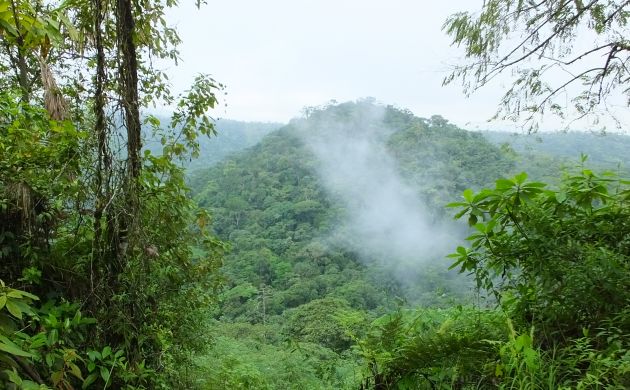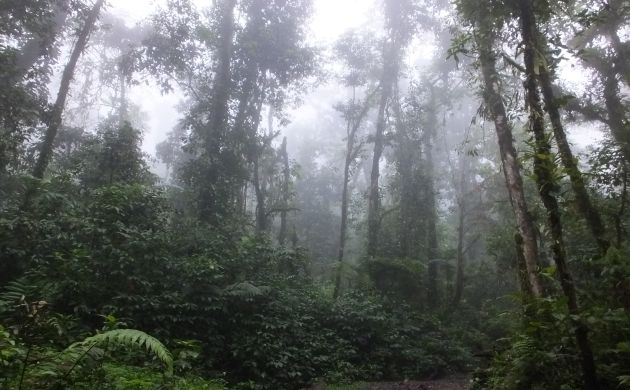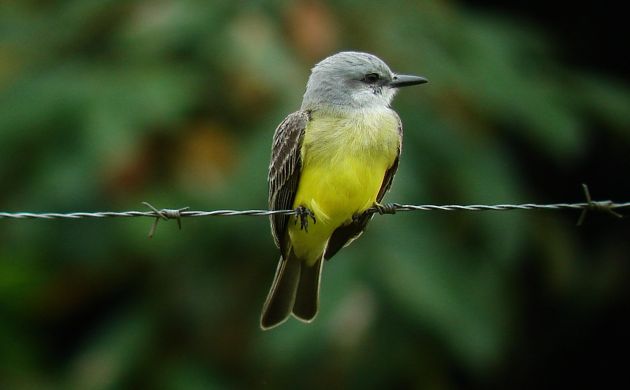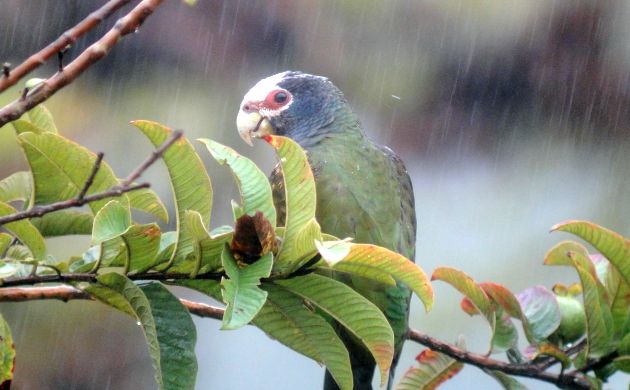
It rains a lot in Costa Rica. There are places in the country soaked with an average of four meters of a rain a year and some sites probably see more. Yes, we do have a dry season but that only holds sway in certain parts of Costa Rica, and then there are those places that seem to be perpetually wet. I can’t knock the rain, though, because it’s part of the local scene and one of the main factors behind a 900+ list with crazy, cool birds like Black-crowned Antpitta, sixteen species of woodcreepers, antshrikes, and other avian eye candy. All of that rain makes for constant vegetation, bugs of all sizes, lots of hiding lizards, and enough biomass to support such a huge variety of birds.
Typical conditions when birding wet rainforest in Costa Rica.
Water everywhere might equal more birds but yes, to be honest, it can be a royal pain. Trying to get a better look at that lifer hiding in a bromeliad 100 feet above the ground is enough of a challenge in dry weather. Add a constant downpour to the mix and you start to wonder why you are making the slightest attempt to balance optics in one hand and an umbrella in the other so you can parse an ID out of a distant silhouette already blurred by falling water. The effort pays off when the bird turns into an obvious Brown-billed Scythebill, or clarifies itself as a rare, weirdo Sharpbill but most times, you are left with wet optics and a mossy plate of frustration.
Sure, you can diminish that feeling of “arghhh” by sticking to dry season visits but since those months are the wettest ones on the Caribbean slope, you might as well get used to the rain in Costa Rica. Or, you can follow these tips and see just as many birds:
- Bring an umbrella: This little tip seems as obvious as a Tropical Kingbird on a roadside wire but a lot of birders leave that accessory at home because they packed the latest in serious “raingear”, or settled on a poncho. That’s alright to bring that stuff and heavy duty raingear might work out in the high elevations but trust me, it’s going to be way too hot just about everywhere else in Costa Rica. A small umbrella keeps you cooler, keeps you dry enough, and, with practice, can be used for birding in the rain (I wasn’t kidding about the bino-umbrella balancing act).

You will see a few of these in Costa Rica (along with most places in the Neotropical region).
- Bring dry bags: This can mean official dry bags, any sort of waterproof bag-like thing, and those wonderful, handy-dandy ziplock bags. These are essential for keeping your binos, camera, recording equipment, and whatever else, ruined by unwelcome, natural baths. Help those dry bags work by putting dessicant packs in each of them.
- Wear quick-drying clothes: Wear stuff that can dry with a quickness. All of that mist and humidity will prevent clothes from drying out completely but at least your shirt won’t sprout mushrooms (although I had them grow out of my backpack once in the Amazon).
- Go birding: Don’t let the threat of rainy weather stop you from taking a birding trip to Costa Rica in the wet season. It doesn’t actually rain all of the time, the weather is cooler, and you still see lots of birds. In fact, you might see even more than during the dry season (see the next tip).
- Get ready to see more birds: Ok, so maybe, maybe not and there aren’t any boreal migrants in the house but my biggest days in Costa Rica have always been the ones with intermittent rain and misty, cloudy weather. Sunny days in Costa Rica might look inviting but they turn the rainforests into a dead zone. On days like that, the bird activity takes a serious pause after 8 AM, might start up around 11, and stays pretty quiet until the late afternoon. Compare that to regular, sometimes constant, bird activity on cloudy days with occasional rain, and you can see why I love going birding at this time of the year.
This White-crowned Parrot was seen during constant rain at Cinchona, Costa Rica.
- Skedaddle to the Pacific slope if the rain doesn’t stop: During the months of October, November, and December, cold fronts spawn rain on the Caribbean slope. We aren’t talking a shower or two either. More like deluge 40 days and nights rain that might slow down but never stops! If you experience a couple days like this during the last three months of the year, you might be better off going back over the mountains for some drier Pacific slope birding. The good thing about Costa Rica is that its small size makes this an easy option.
If you don’t mind missing out on Summer Tanagers and other birds from the north, try wet season birding in Costa Rica.














Patrick definitely knows what he’s talking about here. I visited Costa Rica during the height of the rainy season and, despite seemingly unrelenting precipitation, Patrick and I saw tons of great birds in a very short span.
Thanks for the inspiring and convincing post!